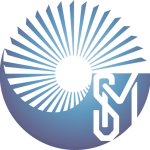Speaker
Description
Machine learning algorithms have become indispensable tools across all branches of science in recent years. These algorithms, comprised of sets of neural networks, excel at identifying and classifying patterns within datasets, proving to be comparable to human capacity in classification tasks. Moreover, they offer the advantage of completing tasks much faster than a human could. In this study, we propose the use of an image classification algorithm to determine when nanoparticles within a nanomaterial dispersed in a matrix reach the percolation threshold. We evaluated nanocomposites with varying concentrations of metal nanoparticles and metal oxide nanoparticles for their electrical properties. Percolation in a nanocomposite occurs when its conductivity approaches that of the nanofiller dispersed within the matrix. To achieve this, we utilized a database of scanning electron microscope images capturing the cross-section of nanocomposites to train a convolutional neural network (CNN). Each image was associated with a percolation characteristic, either positive or negative, during the training phase. Image features were automatically selected by a non-supervised machine learning algorithm. Subsequently, this allowed us to identify the nanocomposites that had reached percolation without the need to characterize their electrical properties.
Reference
S. Mimar and G. Ghoshal, A sampling-guided unsupervised learning method to capture percolation in complex networks, Sci Rep 12, 4147 (2022). https://doi.org/10.1038/s41598-022-07921-x
This work was supported by
CIMAV, CONAHCYT
| Keywords | percolation threshold, convolutional neural network, nanocomposites, machine learning |
|---|---|
| Author approval | I confirm |
| Author will attend | I confirm |

